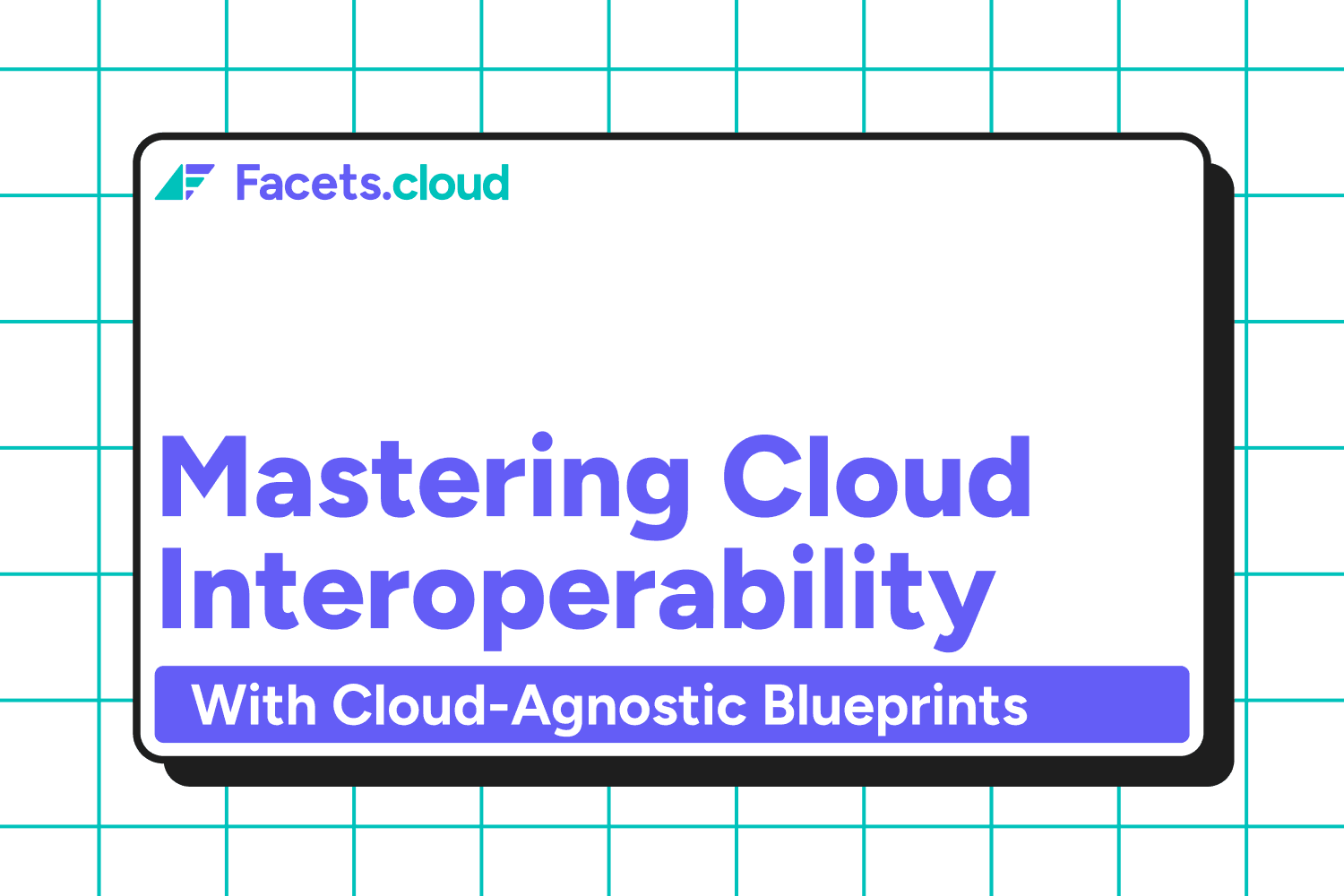Every time your team provisions infrastructure with Terraform modules, you're paying an invisible tax. Here's how Infrastructure Design by Contract eliminates it.

The Hidden Tax of Terraform Modules
If you've used Terraform modules extensively, you're familiar with this scenario: You need to connect a VPC to a database and application service. Simple enough, right?
What follows is a productivity-draining cycle that silently taxes your engineering time:
The Integration Tax in Action
Step 1: Documentation Expedition
For the VPC module, you dig through the docs or source code:
# From terraform-aws-modules/vpc/aws
output "vpc_id" {
value = aws_vpc.this.id
}
output "private_subnets" {
value = aws_subnet.private.*.id
}
output "public_subnets" {
value = aws_subnet.public.*.id
}For the database module, more digging:
# From terraform-aws-modules/rds/aws
variable "vpc_security_group_ids" {
type = list(string)
}
variable "subnet_ids" {
type = list(string)
}Step 2: Educated Guesswork
After studying the docs, you write what you hope is the correct integration:
module "vpc" {
source = "terraform-aws-modules/vpc/aws"
# VPC configuration...
}
module "db" {
source = "terraform-aws-modules/rds/aws"
subnet_ids = module.vpc.private_subnets
vpc_security_group_ids = [aws_security_group.database.id]
# Database configuration...
}Step 3: Deploy and Pray
Error: Error creating DB Instance: InvalidParameterCombination:
RDS DB Subnet Group doesn't match VPCBack to the documentation. Fix and try again. Rinse and repeat.
Measuring the Tax
This integration tax costs you in multiple ways:
- Time spent reading documentation - Often 30+ minutes per module
- Trial-and-error debugging cycles - Each failure adds 15+ minutes
- Context switching costs - Every debugging cycle breaks the flow state
- Delayed delivery - Infrastructure that should take minutes takes hours
For a typical organization with dozens of workloads, this tax easily consumes thousands of engineering hours annually.
The Module Variation Multiplier
What makes this tax particularly painful is module inconsistency. Consider two different VPC modules:
output "vpc_id" { value = aws_vpc.this.id }
output "subnet_ids" { value = aws_subnet.private.*.id }VPC Module B
output "id" { value = aws_vpc.main.id }
output "private_subnet_ids" { value = aws_subnet.private.*.id }Each variation multiplies the documentation and debugging burden. Using modules from different sources compounds this problem further.
Shifting the Integration Burden
In our previous article, "Beyond Terraform Modules: Infrastructure Design by Contract", we introduced the concept of contract-driven infrastructure. Now, let's explore how this approach specifically eliminates the integration tax.
Contract-Based Validation: Preventing Integration Errors
With contract-based infrastructure, connections between components are validated before deployment:
# Infrastructure declaration with contracts
infrastructure:
network:
kind: vpc
flavor: aws
outputs:
default:
type: "@output/aws-vpc"
database:
kind: database
flavor: postgres
inputs:
network:
type: "@output/aws-vpc" # Contract-enforced referenceWhen you declare this infrastructure, the orchestration platform immediately verifies:
- The network component produces a valid contract
- The database component correctly consumes this contract
- All required fields and dependencies are satisfied
This validation happens before a single resource is provisioned, eliminating the costly deploy → fail → debug → redeploy cycle.
The Economics of Shifting the Burden
This approach fundamentally shifts responsibility in a way that makes economic sense:
Traditional Terraform:
- Who pays the tax: Every team that uses infrastructure modules
- When: Every time they provision infrastructure
- How often: Potentially hundreds or thousands of times across an organization
Infrastructure Design by Contract:
- Who pays the tax: Module authors and the platform team.
- When: Once during module creation
- How often: Only when creating or updating contracts (far less frequent)
Since module creation happens far less frequently than module use, this shift dramatically reduces the total integration tax across your organization.
Real-World Time Savings
Let's quantify the savings based on real-world scenarios:
Before: Traditional Terraform Modules
For a typical three-tier application with VPC, database, and application server:
- Module documentation review: 20 minutes
- Initial integration attempt: 20 minutes
- Deployment: 10 minutes
- Debugging cycles (average 2): 40 minutes
- Deployment: 20 minutes
- Total time: 1 hour 50 minutes
For an organization deploying 100 such workloads annually, that's 3630 hours of engineering time spent on integration alone.
After: Infrastructure Design by Contract
For the same three-tier application:
- Declare infrastructure contracts: 10 minutes (~2 minutes with AI)
- Automatic validation: 0 minutes
- Deployment: 0 minutes
- Total time: 20 minutes
That's an 81% reduction in time spent, saving ~3000 hours of engineering time annually for 100 such workloads.
Most importantly, this approach transforms the integration work from variable-cost (increases with each new deployment) to fixed-cost (paid once when creating modules and contracts).
Business Impact Beyond Time Savings
Eliminating the Terraform tax delivers more than just time savings:
- Faster time to market - Infrastructure provisioning becomes minutes instead of hours or days
- Higher-quality infrastructure - Pre-validated contracts mean fewer production issues
- Better use of engineering talent - Infrastructure engineers create reusable capabilities rather than debugging integrations
- Improved security and compliance - Contracts enforce organization-wide policies and standards
Getting Started: Evolutionary Approach
You don't need to transform everything at once. Start by:
- Audit your integration costs - Track time spent on module integration
- Identify high-friction modules - Focus on those with complex integration requirements
- Create contract-based wrappers - Begin with explicit contracts for existing modules
- Build validation tooling - Start simple with pre-deployment contract checks
Conclusion
Terraform's hidden integration tax silently drains your engineering productivity. By shifting from string-matching to semantic contracts, you can eliminate this tax and allow your teams to focus on delivering value.
The upfront investment in contract design pays massive dividends through faster delivery, fewer errors, and more strategic use of engineering talent.
As you evaluate your infrastructure approach, ask yourself: How much is the Terraform tax costing your organization? And more importantly, what could your teams accomplish if they weren't paying it?
See a video showing this in action
Contact us if you relate to the concepts above and want to envision what life looks like after this innovation.


